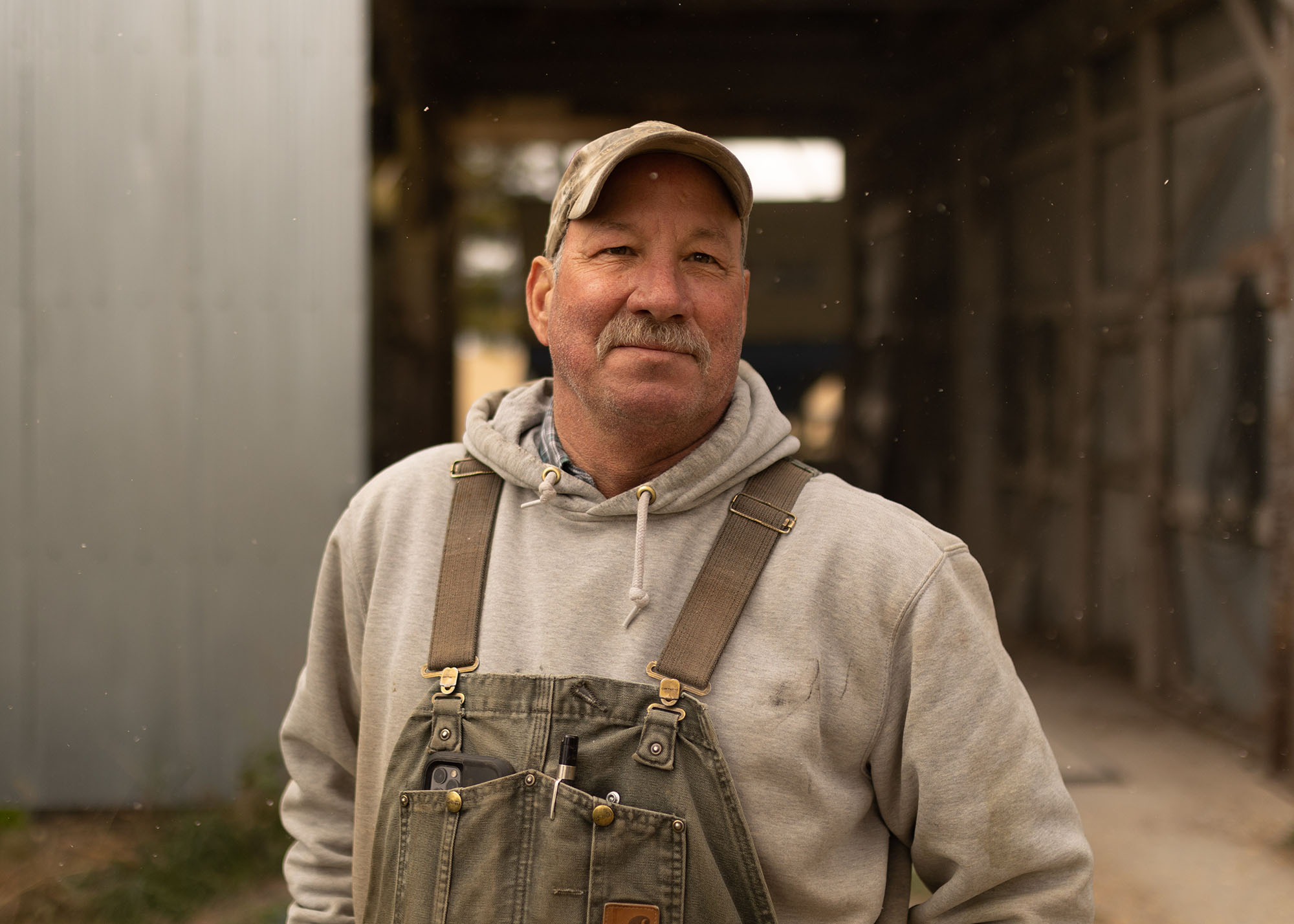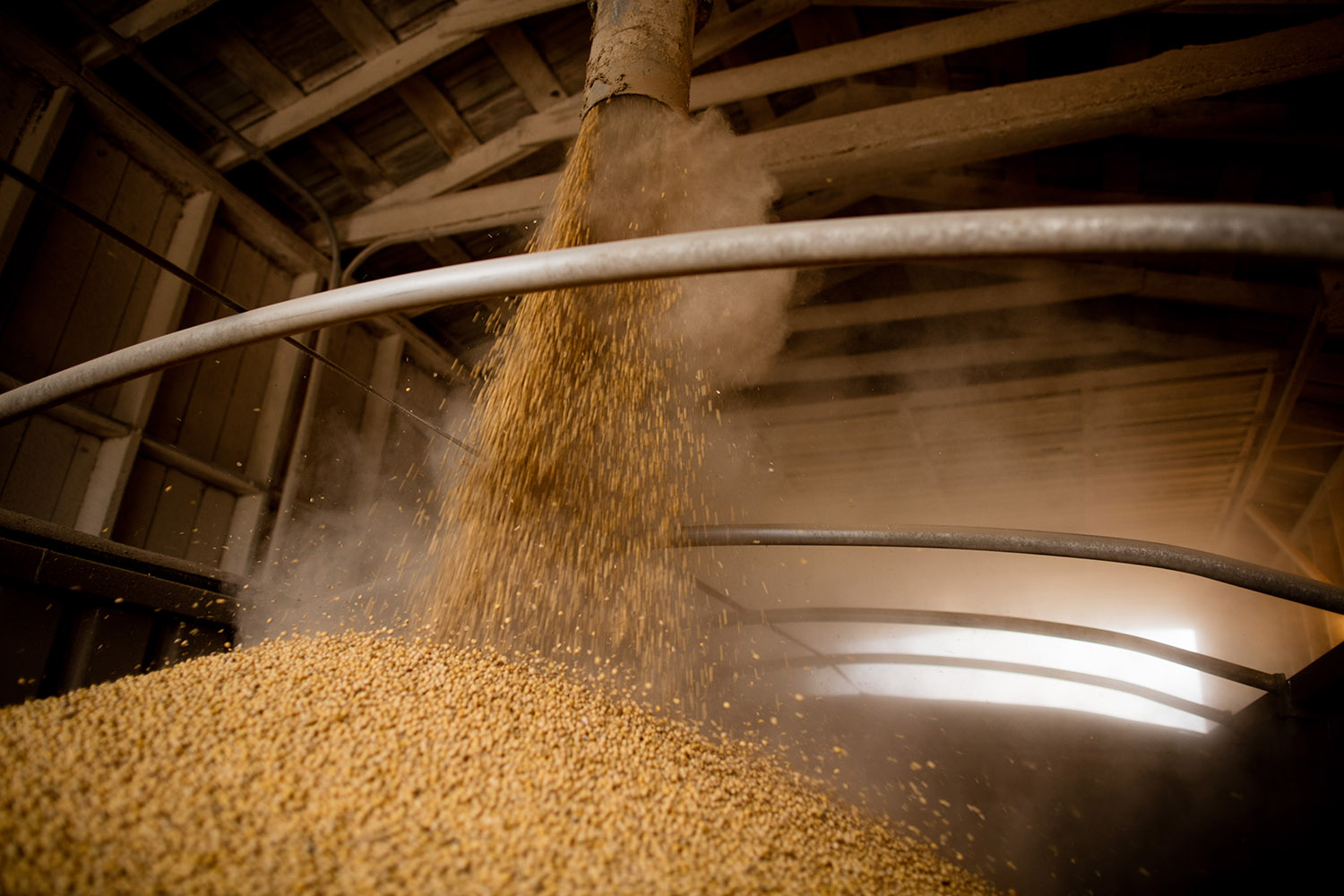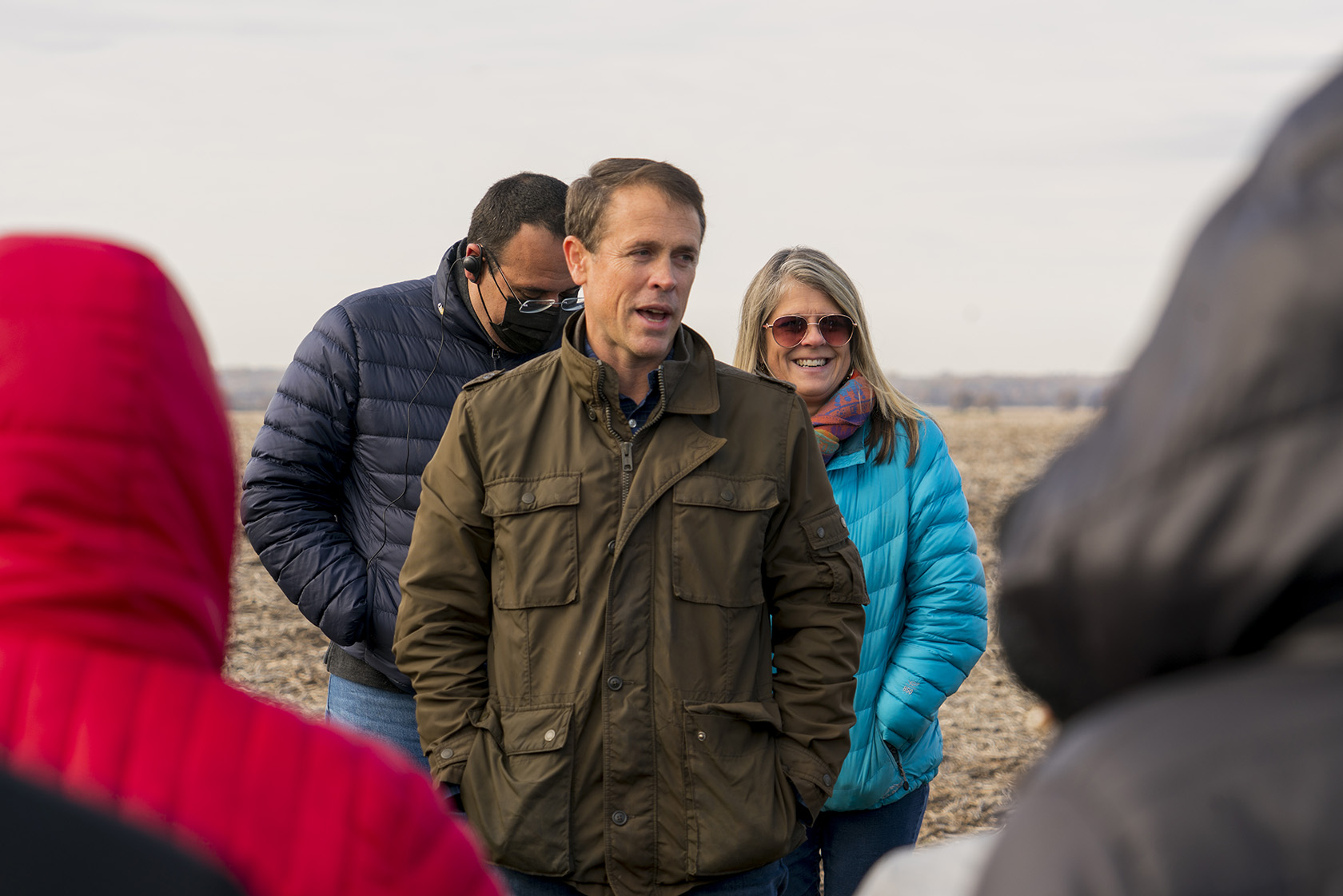
Scot Bailey, farmer near Anita (Photo: Iowa Soybean Association)
Harvest Destination
December 14, 2021
The record books will remember 2021 as a year of challenges, transitions and pleasant surprises for Iowa’s soybean farmers.
Leading the good news is the soybean harvest — it’s projected to break records as the largest in state history at 611 million bushels at 61 bushels per acre (up 7 bushels per acre from 2020). Where will the extra soybeans go from here?
Demand will be key. The relationship between soybean meal and oil, which are produced through the crushing process at an approximate volume ratio, is changing. Soy oil — which historically represented about 33% of the total value to crush — has reached near price parity with soy meal thanks in part to increased demand for renewable fuels and biodiesel.
Mac Marshall, United Soybean Board vice president of market intelligence, calls the change a “paradigm shift.”
“Oil drives domestic crush,” Marshall says. As domestic demand surges and with global production shortfalls across a lot of vegetable oils, the value of soy oil is creeping up, Marshall says. It’s incentivized additional crushing, which is helping drive down meal prices. Soybean meal is starting to become the byproduct of the crush.

With soybean meal prices down roughly 20% for the calendar year, increased cost competitiveness has spurred early-season export strength. From Oct.1-28, exports for soy meal were 8% ahead of the five-year average. The declining meal price also represents some relief for the domestic animal agriculture sector.
“It’s a critical feed ingredient, so even with the surge in demand on the renewable energy side, it’s encouraging for the animal sector,” Marshall says.
Scot Bailey, an Iowa Soybean Association (ISA) board member who farms near Anita, says increased demand for soy oil in the U.S. energy sector is exciting. He suggests soybean meal can be put to good use locally on farms, “Iowa has a lot of hogs, he says.”
“We can utilize the extra production and get it used so we don’t end up with the prices crashing.”
While whole soybean exports will likely recede from last year’s record, the 2021-2022 marketing year is shaping up to be a top-five volume export season based on early USDA projections.
“It’s worth noting our export pace for this season relative to last season is off last year’s pace, but we need to consider Hurricane Ida’s impact and the tight supplies heading into this marketing year,” Marshall says. “There weren’t a lot of beans in storage that were ready to hit export as soon as the year kicked off. I think those are important dynamics to keep in mind.”
This year, a key challenge to U.S. exports is the timing of harvest in South America, which could narrow the U.S.’ export window.
Grant Kimberley, ISA senior director of market development, says one of the important efforts of ISA — developing markets — makes a major difference in getting soybeans into the hands of international buyers.

Looking to the current market year, he expects little change in the top customers of U.S. whole soybeans.
“During the trade war, ISA, the U.S. Soybean Export Council (USSEC) and state soybean associations put time and money into growing markets in other places around the world,” Kimberley says.
Kimberley says the efforts have gained market share in other countries. “We’ll probably have to rely on that again this year if South America has another big crop. If we don’t get back to where we would like to be on the China export front, then we can hopefully gain a little extra in other countries around the world.”
Even if South America does eat into the U.S. soybean export window, Marshall says the situation could still benefit Iowa farmers.
“Last season, we had so much aggressive early selling, and there wasn’t the volume to continue shipping,” Marshall says. “Maybe with a slow start this year coupled with Brazil getting off to a strong start, there’s more opportunity to be a year-round supplier and a little bit more smoothness in the seasonality of our shipping of whole beans.”
The 2021 harvest has brought some positivity for Iowa farmers like Bailey. Despite the good yields and good prices, farmers are already looking ahead to the challenges of rising costs of 2022.
“It’s kind of a double-edged sword,” Bailey says.
Back